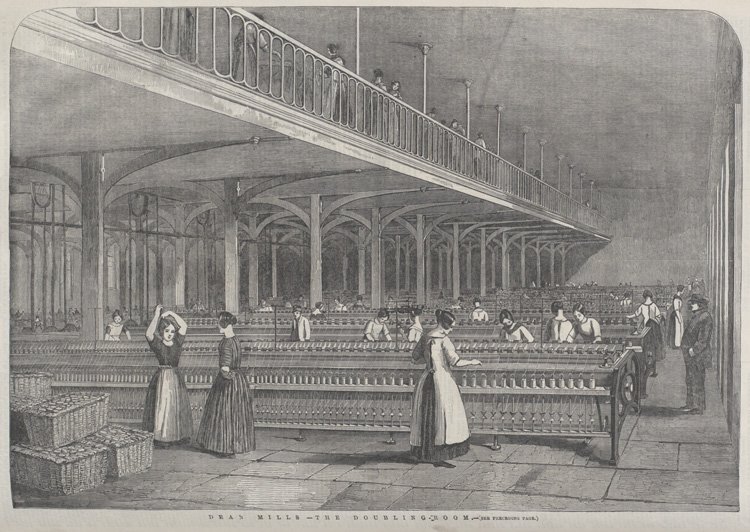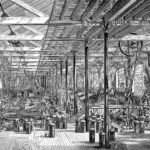The Factory Acts were laws in the UK to improve workers’ conditions. They focused on safety, hours, and child labor.
During the Industrial Revolution, factories were harsh places. Workers faced long hours, unsafe conditions, and low pay. Children as young as six worked in factories. The Factory Acts aimed to change this. These laws helped protect workers’ rights and improve their lives.
They set rules for working hours, safety, and child labor. Over time, these acts evolved, making factories safer and fairer. Understanding The Factory Acts gives insight into workers’ rights history and the labor movement’s progress. Keep reading to learn how these laws changed the workplace and their lasting impact today.
Origins Of The Factory Acts
The Factory Acts were created to improve working conditions. Their origins lie in the social and economic changes of the Industrial Revolution. These laws aimed to protect workers, especially women and children.
Early Industrial Revolution
The Industrial Revolution began in the late 18th century. Factories started to replace small workshops. Machines took over many tasks done by hand. This led to rapid industrial growth. Many people moved to cities for factory jobs. Living conditions in cities were often poor. Overcrowding and disease were common. Factories operated without regulation. They sought to maximize profits at any cost.
Initial Labor Conditions
Early factory work was harsh and dangerous. Workers faced long hours, often 12 to 16 hours a day. Wages were low, and safety measures were rare. Children as young as five worked in factories. Women and children were preferred for their cheap labor. Accidents were frequent, leading to injuries and deaths. The lack of regulations allowed these conditions to persist.
Public concern grew as the plight of workers became more visible. Social reformers pushed for change. This led to the development of the Factory Acts. These laws aimed to improve the health and safety of workers. They marked the beginning of labor rights.
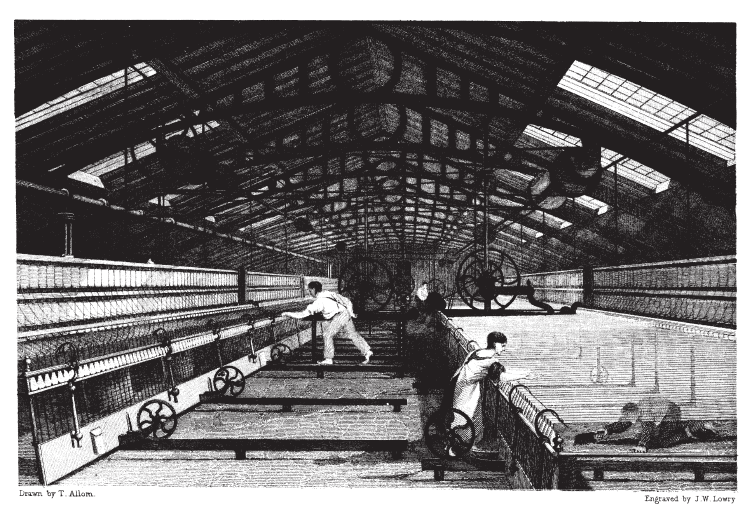
Credit: en.wikipedia.org
Key Provisions Of The Factory Acts
The Factory Acts were a series of laws passed in the UK. They aimed to improve working conditions in factories. These laws had significant impacts on workers. Let’s explore the key provisions of these historic acts.
Working Hours Regulation
The Factory Acts set limits on working hours. Workers could not be made to work excessive hours. This ensured better work-life balance. Here are some key points:
- Adults: Maximum 10 hours per day.
- Women: Limited to 10 hours per day.
- Children: Strictly regulated hours.
These limits helped reduce worker fatigue and accidents.
Child Labor Restrictions
Child labor was a major concern during the industrial revolution. The Factory Acts introduced several restrictions to protect children. Key provisions included:
| Age Group | Restrictions |
|---|---|
| Under 9 years | Not allowed to work. |
| 9-13 years | Maximum 9 hours per day. |
| 13-18 years | Maximum 12 hours per day. |
These laws also required children to attend school. This ensured children received an education. It also reduced the exploitation of young workers.
The Factory Acts were a major step forward. They helped create safer and fairer working conditions. These laws paved the way for modern labor regulations.
Major Amendments And Revisions
The Factory Acts were laws passed to improve conditions for workers. These laws changed over time to provide better protection. Below are some of the most significant amendments and revisions to these laws.
1833 Factory Act
The 1833 Factory Act was a key moment in labor law. This act aimed to improve the working conditions in factories. Here are some important points:
- Children aged 9-13 could work no more than 9 hours a day.
- Children aged 14-18 were limited to 12 hours of work per day.
- Night work was banned for children.
- Factory inspectors were appointed to enforce the law.
This act was a big step forward in protecting young workers. It ensured they had time for education and rest. The inspectors played a crucial role in monitoring compliance.
1844 Factory Act
The 1844 Factory Act brought further improvements. This act focused on safety and working hours. Key points include:
- Women were limited to working 12 hours a day.
- Children’s working hours were further reduced to 6.5 hours a day.
- Machinery had to be fenced to prevent accidents.
- Accidents had to be reported and investigated.
This act helped to make factories safer places to work. Reducing the hours for children and women was a significant improvement. Safety measures like fencing machinery reduced the risk of injury.
These revisions showed a commitment to improving the lives of factory workers. They set the stage for future labor laws and protections.
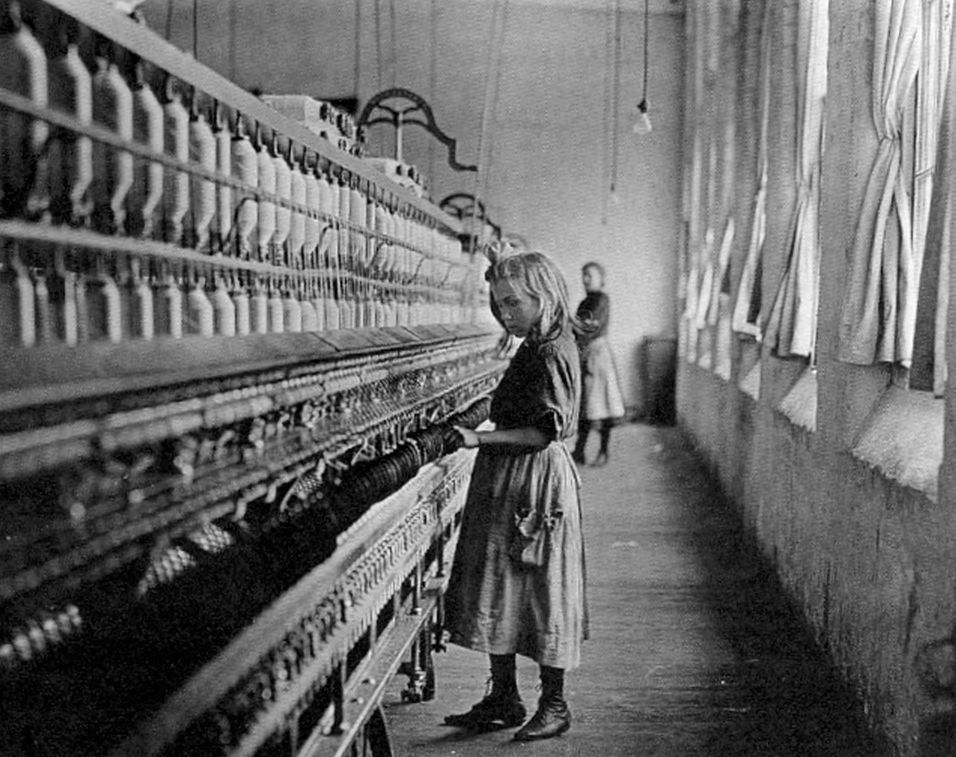
Credit: www.historycrunch.com
Impact On Workers’ Rights
The Factory Acts were a series of laws passed in the 19th century. Their purpose was to improve the working conditions in factories. These laws had a significant impact on workers’ rights. They addressed various issues such as health and safety, wages, and benefits.
Health And Safety Improvements
The Factory Acts brought major changes to health and safety standards. Before these laws, workers faced dangerous conditions. Factories were often dirty and poorly ventilated. Machinery was unsafe, leading to frequent accidents.
With the new regulations, factory owners had to improve these conditions. They were required to maintain clean workplaces. Proper ventilation became mandatory. Machinery had to be safer. Guards were installed to prevent accidents. These changes greatly reduced workplace injuries and illnesses.
Wages And Benefits
The Factory Acts also addressed wages and benefits. Workers often received low pay for long hours. There were no benefits like sick leave or vacation.
The laws introduced minimum wage standards. Overtime pay became a requirement. Workers’ hours were limited. These changes ensured fair compensation for labor. Benefits such as sick leave and breaks were also mandated. This improved the overall well-being of workers.
Here’s a table summarizing the key changes:
| Aspect | Before Factory Acts | After Factory Acts |
|---|---|---|
| Health and Safety | Dirty, unsafe conditions | Clean, safer environments |
| Wages | Low pay | Minimum wage standards |
| Benefits | None | Sick leave, breaks |
These changes marked a turning point for workers’ rights. They provided better protection and fair treatment for factory workers.
Role Of Reformers And Activists
The Factory Acts were a series of laws passed to improve the working conditions in factories. These laws were not the result of a single effort. Instead, it was the relentless work of many reformers and activists. Their tireless campaigns played a key role in shaping labor laws. Below, we delve into the efforts of these pivotal figures and their public campaigns.
Key Figures
Several key figures emerged as champions of workers’ rights. They worked tirelessly to bring about the Factory Acts.
- Richard Oastler: Known as the “Factory King,” he fought for children’s rights. He campaigned against long working hours.
- Lord Shaftesbury: A prominent social reformer. He played a crucial role in passing the Ten Hours Act.
- Michael Sadler: His reports revealed the harsh conditions in factories. These reports spurred public support for reforms.
Public Campaigns
The efforts of these reformers were often supported by public campaigns. These campaigns aimed to educate the public and gather support.
| Campaign | Description |
|---|---|
| Petitions | Thousands signed petitions demanding better working conditions. |
| Public Meetings | Reformers held public meetings to raise awareness. |
| Newspaper Articles | Articles highlighted the plight of factory workers. |
These public campaigns were instrumental. They put pressure on lawmakers to pass the Factory Acts. The relentless efforts of reformers and activists cannot be overstated.
Opposition And Challenges
The Factory Acts faced significant opposition and challenges. These laws aimed to improve working conditions. But not everyone agreed with them. Many groups resisted these changes for various reasons.
Industrialists’ Resistance
Industrialists strongly opposed the Factory Acts. They believed the laws would hurt their profits. Factories needed cheap labor to stay competitive. The new laws would increase costs. They argued that higher costs would lead to job losses. Industrialists feared losing their economic edge. They lobbied against the Acts to protect their interests.
Economic Concerns
Economic concerns were a major challenge. Critics worried about the economic impact of the laws. They argued that stricter regulations would slow economic growth. Higher production costs could drive businesses out of the country. Some feared that foreign competition would increase. These economic concerns fueled the opposition to the Factory Acts.
Long-term Effects On Labor Laws
The Factory Acts were a series of laws passed in the UK during the 19th century. They aimed to improve working conditions in factories. These laws had significant long-term effects on labor regulations. They laid the groundwork for modern labor standards. This impact extended far beyond the UK.
The Factory Acts focused on reducing working hours. They also aimed to improve safety and health standards. These changes brought immediate relief to workers. But their influence continued to grow over time. Let’s explore how these laws shaped modern labor standards and influenced international regulations.
Modern Labor Standards
The Factory Acts set a precedent for modern labor standards. They introduced the idea that workers should have rights. Before these laws, workers had little protection. They often worked long hours in unsafe conditions. The Acts changed that. They established limits on working hours. They also required safer working environments.
Modern labor laws build on these principles. Today, many countries have laws that limit working hours. They also have regulations that ensure workplace safety. The idea that workers should have rights is now widely accepted. The Factory Acts played a key role in this shift.
International Influence
The impact of the Factory Acts was not limited to the UK. Other countries took notice. They began to implement similar laws. The ideas behind the Factory Acts spread across the world. They influenced labor regulations in many nations.
International organizations also embraced these principles. The International Labour Organization (ILO) promotes workers’ rights globally. Many of its standards reflect the principles of the Factory Acts. Through these efforts, the influence of the Factory Acts continues to shape labor laws worldwide.
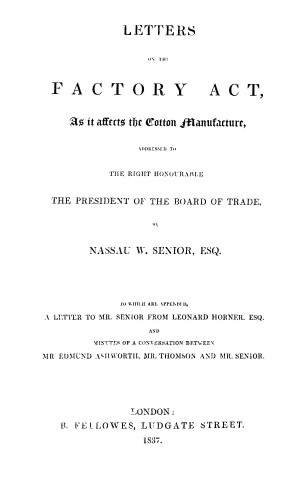
Credit: oll.libertyfund.org
Future Of Workers’ Rights
The Future of Workers’ Rights is a dynamic and evolving topic. As the work environment changes, laws need to adapt. This ensures the protection of workers. The Factory Acts have laid a strong foundation. Yet, many questions remain about what lies ahead. Here, we will explore the evolving legislation and look at global perspectives.
Evolving Legislation
Legislation around workers’ rights is always changing. Governments strive to keep up with new challenges. These include gig economy jobs and remote work. The goal is to protect workers. The Factory Acts were one of the first steps. They aimed to improve working conditions. Yet, modern issues need modern solutions.
For instance, safety regulations need regular updates. New industries bring new risks. Mental health is also a growing concern. Laws must ensure a healthy work-life balance. Flexible working hours and parental leave are now vital components. Legislators must continuously review and update these laws.
Global Perspectives
Workers’ rights vary from country to country. Some nations have advanced laws. Others still have a long way to go. Comparing these global standards can help improve local laws.
| Country | Key Legislation | Focus Area |
|---|---|---|
| United States | Fair Labor Standards Act | Minimum Wage, Overtime Pay |
| Germany | Working Hours Act | Work Hours, Rest Periods |
| Japan | Labour Standards Act | Work Conditions, Safety |
In Europe, many countries have strong unions. These unions play a crucial role. They ensure workers’ rights are respected. In Asia, rapid industrial growth poses challenges. Regulations need to catch up with this growth.
Learning from global practices can help. It can lead to better laws and happier workers. The future of workers’ rights depends on continuous improvement. It requires a collective effort from all stakeholders.
FAQs
What Are The Factory Acts?
The Factory Acts were laws passed in the UK. They aimed to improve working conditions. These laws reduced working hours and regulated child labor.
When Were The Factory Acts Introduced?
The Factory Acts were introduced in the early 19th century. The first Act was passed in 1833. They continued to evolve over time.
Who Benefited From The Factory Acts?
The primary beneficiaries were workers, especially children and women. These laws provided better working conditions. They ensured safer and more humane workplaces.
Why Were The Factory Acts Important?
The Factory Acts were crucial for labor rights. They improved safety and health standards. They marked significant progress in workers’ welfare.
Conclusion
The Factory Acts significantly improved workers’ lives. They reduced work hours and child labor. Health and safety also saw major advancements. These laws laid the foundation for modern labor rights. Employers faced stricter regulations, benefiting employees. The Factory Acts’ impact remains vital today.
Workers’ rights and safety continue to evolve. Understanding these Acts helps appreciate current labor laws. Their legacy ensures fair treatment for all workers.

